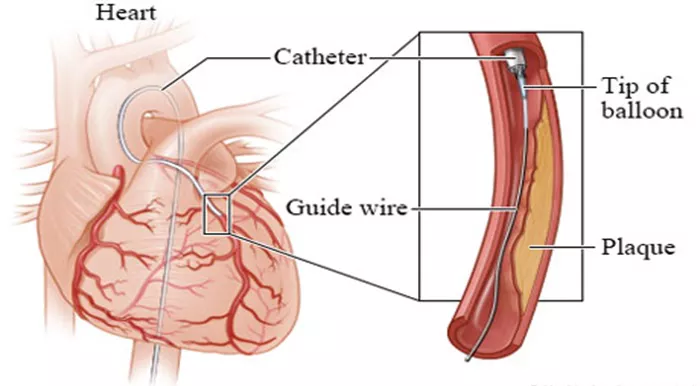Coronary blood flow is a critical aspect of cardiovascular health, directly influencing the functionality of the heart muscle and overall circulatory system. This article aims to provide a comprehensive understanding of what coronary blood flow per minute is, the factors influencing it, and its significance in maintaining heart health.
The Basics of Coronary Blood Flow
Coronary blood flow refers to the circulation of blood through the coronary arteries, which supply the heart muscle (myocardium) with oxygen-rich blood. This process is crucial because the heart requires a constant supply of oxygen and nutrients to function effectively and efficiently pump blood to the rest of the body.
Measurement of Coronary Blood Flow
Coronary blood flow is typically measured in milliliters per minute (mL/min). The average coronary blood flow at rest is about 250-300 mL/min, which constitutes approximately 5% of the total cardiac output. However, this flow rate can significantly increase during physical activity or stress to meet the elevated oxygen demands of the heart muscle.
Factors Influencing Coronary Blood Flow
Several factors can influence coronary blood flow, including:
1. Coronary Artery Diameter
The diameter of the coronary arteries plays a crucial role in determining the amount of blood that can flow through them.
Narrowing of these arteries, often due to atherosclerosis, can significantly reduce blood flow and lead to conditions such as angina or myocardial infarction.
SEE ALSO: The 7 Early Signs of Coronary Artery Disease
2. Heart Rate
Heart rate directly affects coronary blood flow. An increased heart rate, as seen during exercise or stress, can enhance coronary blood flow to meet the higher metabolic demands of the myocardium.
3. Blood Pressure
Blood pressure is another critical factor. Higher blood pressure can increase coronary perfusion pressure, potentially enhancing blood flow.
However, chronic hypertension can lead to damage and stiffening of the coronary arteries, impairing blood flow.
4. Myocardial Oxygen Demand
The demand for oxygen by the heart muscle influences coronary blood flow. During periods of high oxygen demand, such as during intense physical activity, coronary blood flow must increase to supply sufficient oxygen to the myocardium.
5. Autoregulation
The coronary circulation has an intrinsic ability to regulate blood flow to meet the metabolic demands of the heart. This autoregulation ensures a consistent supply of oxygen and nutrients to the myocardium despite fluctuations in blood pressure.
Physiological Regulation of Coronary Blood Flow
The body employs several mechanisms to regulate coronary blood flow, ensuring that the heart receives adequate blood supply under varying conditions.
1. Metabolic Regulation
Metabolic regulation is a primary mechanism wherein the accumulation of metabolic byproducts, such as carbon dioxide and hydrogen ions, causes vasodilation of the coronary arteries, increasing blood flow to the myocardium.
2. Endothelial Regulation
The endothelium, the inner lining of blood vessels, plays a crucial role in regulating coronary blood flow. Endothelial cells release substances such as nitric oxide (NO), which cause vasodilation and improve blood flow.
3. Neural Regulation
The autonomic nervous system regulates coronary blood flow through sympathetic and parasympathetic stimulation.
Sympathetic stimulation typically causes vasoconstriction, while parasympathetic stimulation promotes vasodilation.
Coronary Blood Flow During Physical Activity
During physical activity, the body’s demand for oxygen increases, necessitating a rise in coronary blood flow. This increase is achieved through several mechanisms:
1. Increased Heart Rate and Cardiac Output
Physical activity elevates heart rate and cardiac output, thereby increasing the volume of blood pumped through the coronary arteries.
2. Enhanced Myocardial Oxygen Extraction
During exercise, the myocardium extracts more oxygen from the blood, enhancing the efficiency of oxygen utilization and increasing the overall coronary blood flow.
3. Vasodilation
Exercise-induced vasodilation, mediated by metabolic and endothelial factors, allows for greater blood flow through the coronary arteries, meeting the increased oxygen demands of the heart muscle.
Impact of Coronary Blood Flow on Heart Health
Adequate coronary blood flow is essential for maintaining heart health and preventing cardiovascular diseases. Insufficient blood flow can lead to various cardiac conditions, including:
1. Ischemic Heart Disease
Reduced coronary blood flow can cause ischemia, where the myocardium receives insufficient oxygen, leading to chest pain (angina) and, in severe cases, myocardial infarction (heart attack).
2. Heart Failure
Chronic insufficient coronary blood flow can weaken the heart muscle, leading to heart failure, a condition where the heart cannot pump blood effectively to meet the body’s needs.
3. Arrhythmias
Impaired coronary blood flow can affect the electrical activity of the heart, leading to arrhythmias, which are irregular heartbeats that can be life-threatening if not managed properly.
Improving Coronary Blood Flow
Several lifestyle changes and medical interventions can improve coronary blood flow and overall heart health:
1. Regular Physical Activity
Engaging in regular physical activity helps maintain healthy coronary blood flow by enhancing cardiovascular fitness and promoting vasodilation.
2. Healthy Diet
A diet rich in fruits, vegetables, whole grains, and lean proteins supports cardiovascular health and prevents the buildup of atherosclerotic plaques in the coronary arteries.
3. Smoking Cessation
Smoking damages the endothelium and promotes atherosclerosis, reducing coronary blood flow. Quitting smoking significantly improves coronary artery health and blood flow.
4. Medications
Medications such as statins, beta-blockers, and vasodilators can improve coronary blood flow by reducing cholesterol levels, lowering blood pressure, and relaxing blood vessels.
5. Surgical Interventions
In severe cases of coronary artery disease, surgical interventions such as angioplasty or coronary artery bypass grafting (CABG) can restore adequate blood flow to the myocardium.
Conclusion
Understanding and maintaining adequate coronary blood flow per minute is vital for heart health and overall well-being.
Various factors influence coronary blood flow, and physiological mechanisms ensure that the heart muscle receives sufficient oxygen and nutrients under different conditions. By adopting healthy lifestyle habits and, if necessary, medical interventions, individuals can improve their coronary blood flow and reduce the risk of cardiovascular diseases.

